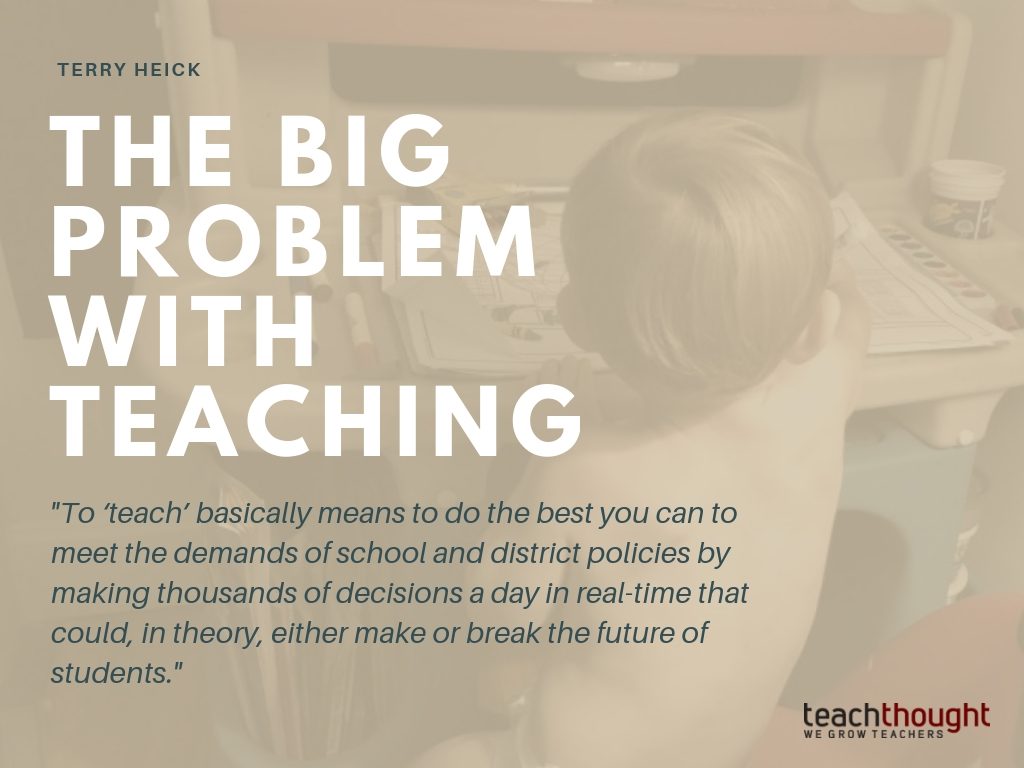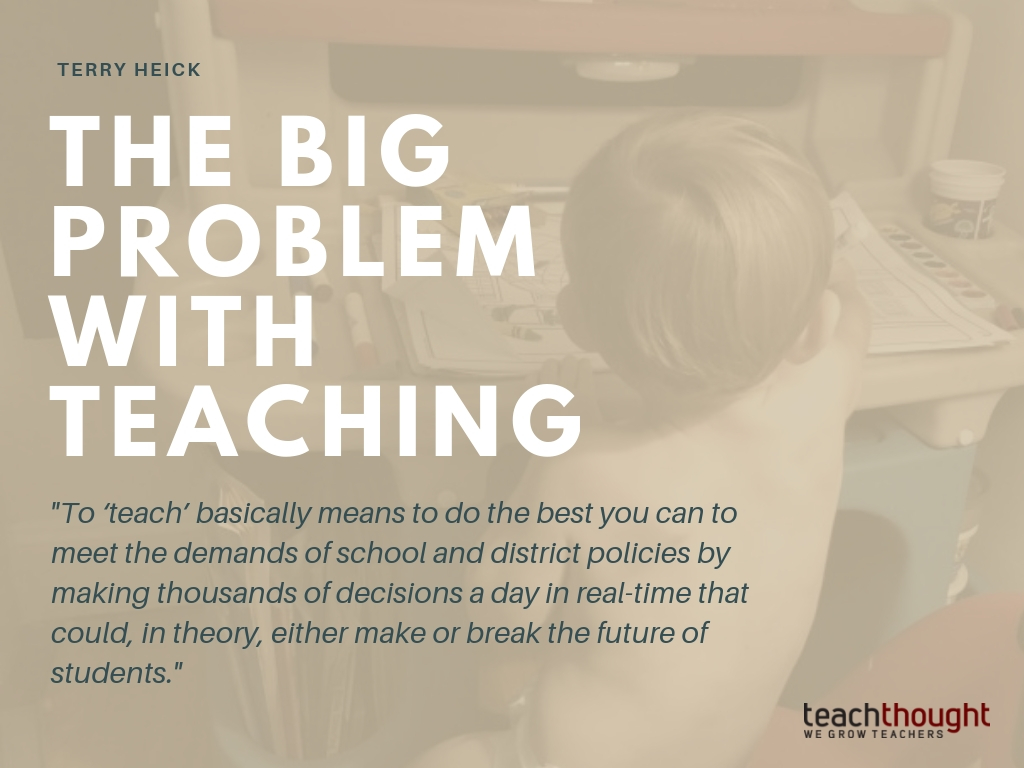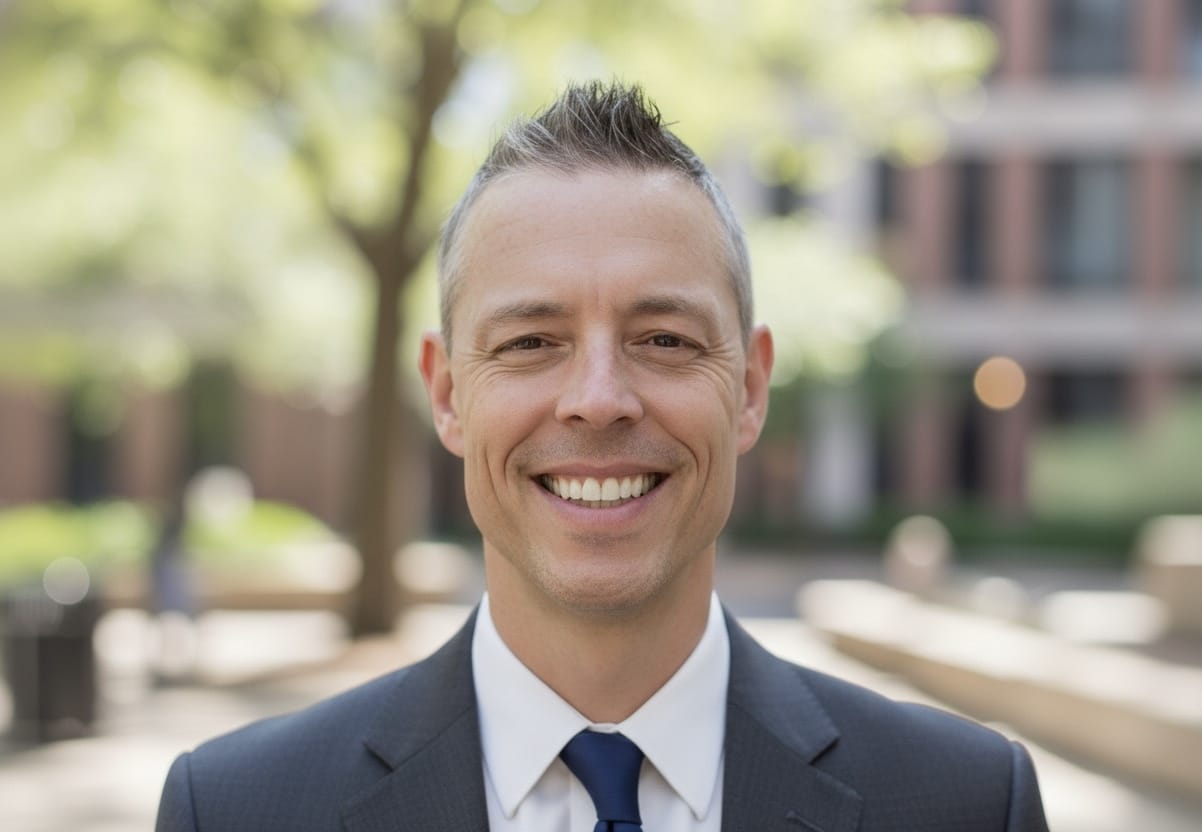
Is Great Teaching Sustainable?
by Terry Heick
The typical approach to modern, K-12 pedagogy is to clarify a learning target, plan a learning experience that seems well-suited to ‘cause’ understanding of that target, and then assess student mastery of that target.
Put another way, we decide what’s going to be learned, try to help them learn it, then see if they learned it.
In a more advanced version of this approach, teachers will pre-assess all students on their mastery of a given learning target, then plan an activity or lesson for all students that is inherently differentiated—that is, students will seek the same learning outcome (or target) in different ways.
In an even more advanced version of this outcomes-based and data-driven approach, teachers will pre-assess students, create tiered learning targets based on that data to personalize the learning of students, then design (or select) assessment forms that give the student the best opportunity to demonstrate what they know. That is, the tool used to measure the understanding will be the tool best suited to that task.
Of course, there’s a lot more going on—or should be a lot more going on, anyway:
Curriculum mapping that’s personalized for each student so that students are not just learning but learning things they don’t already know—and ideally learning the most important things they don’t know in an order and sequence that provides the best opportunity for long-term retention and application of that learning.
Grading and mastery reporting that makes sense to and supports all stakeholders.
Learning feedback that’s truly useful to that student on that day in a tone and duration and form that truly helps students grow.
Instructional design elements that allow students to grapple with complex ideas through ongoing iteration throughout the year—like building a wall with bricks always revisiting and revising thinking and understanding.
All while creating relationships to help all students feel safe and self-motivated to consistently engage with content—and one another—in an authentic and meaningful way.
There are a lot of problems with this approach—problems beyond the reach of a single post. Just accept for now that no matter the nature of this approach, the entire process, from curriculum all the way down to student work, all should withstand our most enthusiastic scrutiny more or less unscathed. That is, we should be able to examine it critically and not find obvious room for improvement.
And it’s not difficult to see that there’s room for improvement, here.
See An Updated Guide To Questioning In The Classroom
For starters, in this outcomes-based and data-driven approach, the outcomes and the data are naturally centered.
If the outcomes and data are centered, then the student and the content are not centered and any attempted ‘centering’ is awkward, difficult, time-consuming, and likely superficial (e.g., allowing students to ‘choose’ between two nearly identical activities that learn the same content the same way on the same day to ultimately be assessed two weeks down the road by the same assessment).
And who is orchestrating all the ‘centering’?
Who designs the learning experiences—and must do so in light of old and new and emerging and presently-obscured ‘data’?
Who extracts and documents the growth—and who records and assesses the validity of the data?
Who is left to reconcile the curriculum, the scope-and-sequences, and the pace of student achievement over time?
Who designs which curriculum is most important and which can play a lesser role?
Who feels terrible when they ‘teach’ and students don’t learn?
Who is blamed when they can’t accurately measure actual understanding (versus simply review test results) of critical content, then consistently revise planned instruction for every student based on always-emerging data?
The teacher.
This is both incredibly unfair and not close to our best thinking. Pressure on teachers creates pressure on students and generally speaking, pressure should not be our preferred method of cultivating genius and affection in children.
The net result of this well-intended but maybe wrong-headed approach to growing the minds of little human beings is near impossibility. It is extremely difficult for any single human being to do this consistently, but because of what’s at stake, teachers try anyway.
They burn themselves out. They struggle with their own physical and mental health. They spend too much money out of their own pocket—but they keep doing it all because what they’re doing is so important.
And when it all works—when students smile and learn and grow and thank them—it’s a special kind of magic that makes everything else seem worth it but whether or not teachers are willing to endure this absurdity for fleeting vignettes of success is missing the point.
Learning is about living and living is about people and places—and very little of this plays any role at all in education. This requires the teacher to become a grand mediator between and across everything else. All the data, all of the learning models, all of the curriculum maps and literacy probes and IEPs and grouping activities and learning objectives and Socratic discussions and inquiry and project-based learning units.
The real currency in any classroom is the decision-making of a single human being doing their best to help every student not just ‘do their best,‘ but meet every standard measured in every possible way—and to fail over and over and over again and settle for the faint hope that they’re actually ‘making a difference,’ all while being pulled in a million different directions every single day and hiding it all from the students—the whole reason they’re there to begin with.
To ‘teach’ basically means to do the best you can to meet the demands of school and district policies by making thousands of decisions a day in real-time that could, in theory, either make or break the future of students.
That’s the magic of teaching–and it’s also unfair to everyone: teachers, students, and communities. But the enormity and importance and human and academic elements of it all combined with the sanctity of the task keeps teachers coming back for more even when they know it’s impossible.
And that’s the problem with teaching.

